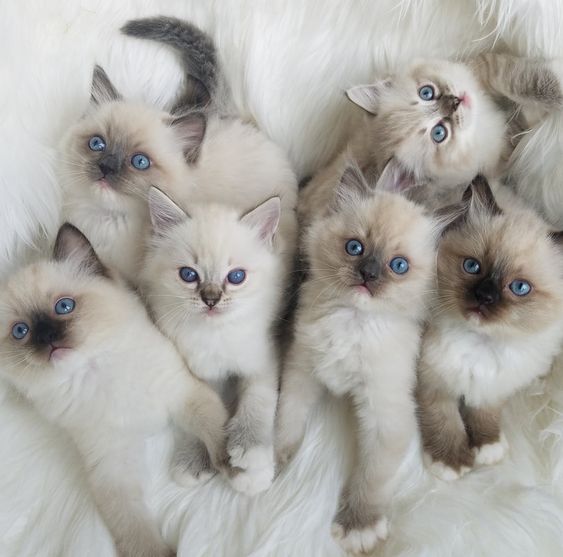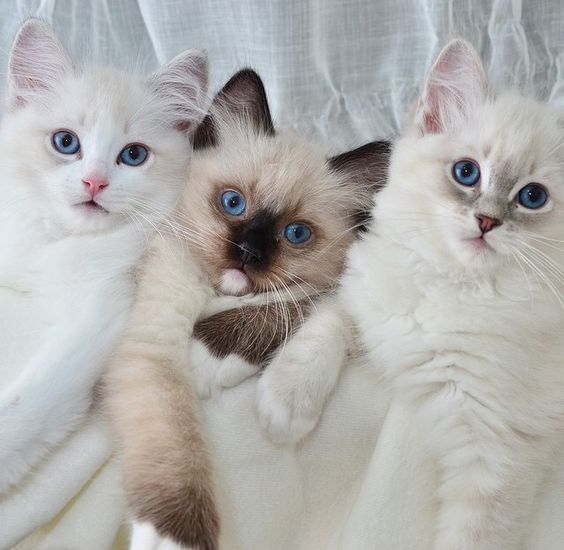Himalayan cats, also known as “Himmies,” are a popular breed among cat lovers. These beautiful creatures are known for their stunning blue eyes, pointed coloration, and docile personality. They are a cross between Siamese cats and Persian cats and have been bred since the 1930s.
If you’re considering adding a Himalayan cat to your family, you may be wondering about the cost. In this article, we’ll explore the various factors that influence the price of a Himalayan cat and provide tips on how to find a reputable breeder.

Factors That Affect the Price of a Himalayan Cat
The cost of a Himalayan cat can vary widely depending on several factors. Here are some of the most important factors that influence the price:
Pedigree

The pedigree of a Himalayan cat plays a significant role in determining its price. If a cat has a long line of ancestors with show titles and championships, it will likely command a higher price than a cat without such accolades. However, keep in mind that a cat’s pedigree is not always an indicator of its health or temperament.
Age

The age of a Himalayan cat can also affect its price. Kittens are typically more expensive than adult cats because they require more care and attention. Additionally, if a kitten comes from a rare or in-demand bloodline, the price will likely be even higher.
Coat Color and Pattern

The coat color and pattern of a Himalayan cat can also impact its price. Cats with more unusual or rare colors and patterns are generally more expensive than those with more common coloring.
Breeder Reputation
Finally, the reputation of the breeder can play a role in the price of a Himalayan cat. Reputable breeders who focus on producing healthy, well-socialized cats may charge more for their kittens than breeders who prioritize quantity over quality.
How Much Does a Himalayan Cat Cost?
So, how much can you expect to pay for a Himalayan cat? The answer is: it depends. On average, the price of a Himalayan cat ranges from $500 to $1,500. However, some breeders may charge more for kittens with exceptional pedigrees or rare coat colors and patterns.
Keep in mind that the initial purchase price is just one aspect of the cost of owning a Himalayan cat. You’ll also need to factor in ongoing expenses like food, litter, toys, and veterinary care.
Where to Find a Himalayan Cat
If you’re interested in adding a Himalayan cat to your family, the first step is to find a reputable breeder. Here are some tips for locating a trustworthy breeder:
- Look for breeders who are registered with a recognized cat breeding organization, such as The International Cat Association (TICA) or the Cat Fanciers’ Association (CFA).
- Ask the breeder for references and check them thoroughly.
- Visit the breeder’s facilities and ask to see the kittens and their parents. A good breeder should be happy to show you around.
- Avoid breeders who seem more concerned with making a sale than ensuring their cats go to good homes.
Additional Advice for Prospective Himalayan Cat Owners
If you’re considering adding a Himalayan cat to your home, here are some additional tips to keep in mind:
Grooming Requirements
Himalayan cats have long, thick coats that require regular grooming to prevent matting and tangling. Be prepared to invest time and money in keeping your cat’s coat looking its best. You’ll also need to trim your cat’s nails regularly and clean their ears to prevent infections.

Health Concerns
Like all purebred cats, Himalayans can be prone to certain health problems. Some common issues include respiratory problems, dental issues, and kidney disease. Before bringing a Himalayan kitten home, make sure you understand the breed’s potential health risks and are prepared to provide the necessary care.
Temperament
Himalayan cats are known for their sweet and affectionate personalities. They thrive on attention and make great lap cats. However, they can be sensitive to changes in their environment and may become stressed or anxious if there is too much commotion in the household. If you have young children or other pets, make sure you introduce them to your new cat gradually to minimize stress.
Training
Himalayan cats are generally easy to train and respond well to positive reinforcement techniques. Many Himmies can learn simple commands like “sit” and “come,” and some even enjoy learning tricks like fetch. Consider enrolling your cat in basic obedience classes to help them develop good habits and strengthen your bond.
Conclusion
Himalayan cats are a unique and beloved breed that make wonderful companions for cat lovers. While they can be expensive to purchase initially, the joy and companionship they provide are priceless. By doing your research and working with a reputable breeder, you can find a healthy and happy Himalayan kitten to bring into your home.